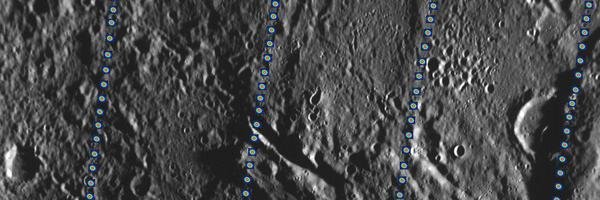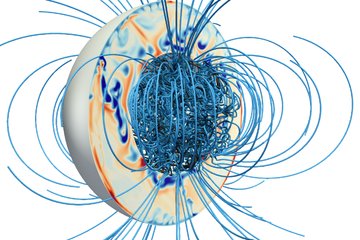
The BepiColombo Laser Altimeter BELA

The BepiColombo Laser Altimeter (BELA) has been selected for flight on board the European Space Agency's BepiColombo Mercury Planetary Orbiter (MPO). Bepi Colombo was launched in October 2018 and will be orbiting Mercury from end of 2025 onwards. The experiment is intended to be Europe's first planetary laser altimeter system.

BELA is being developed by a consortium led by Physikalisches Institut, Universitat Bern and the DLR Institute of Planetary Research Berlin. Our institute is the responsible CoI for the BELA laser, a passively Q-switched and longitudinally pumped solid state laser with pulse energy of up to 50mJ, a pulse frequency of up to 10Hz and a pulse duration of a few nanoseconds. BELA aims to measure the figure axes of the planet to 10m accuracy and the topography with a single-shot ranging accuracy of 1m and with a grid spacing of a few hundred meters along-track. In addition, the tidal deformation and libration of the planet which, as model calculations have shown, should be on the order of a meter, will be deduced from the longterm datasets.
Scientific Objectives

The Laser Altimeter topography data will be used to correct the gravity measurements for the effects of surface topography and thereby allow an assessment of the interior structure of the planet including the lateral variations of the crust thickness and of the core radius. The Laser Altimeter will provide an accurate digital terrain model. This model will be used to make quantitative studies of surface morphology, and to assess the role of volcanism and the tectonics of the planet. Prominent features of the topography known to us today such as lobate scarps will be measured accurately and provide important constraints on the cooling history of the planet.
Our institutes science interest is the measurement of the solar tides which generate elevation changes of Mercury's surface of the order of 1 m within one Hermean year. This can be described through the tidal Love number and the libration amplitude. The inner structure and core size of Mercury can be determined from these parameters. Good resolution of the long-wavelength topography to a spherical harmonic degree larger than 40 is essential for recovering the Love number and libration amplitude.

The BELA Instrument
BELA uses the "direct-detection" approach to laser altimetry. High power pulses (50 mJ) at 1064 nm are emitted from a passive Q-switched Nd:YAG laser at 10 Hz. The emission time of each pulse is measured by a photodiode. The 50 microrad wide beam is reflected from the surface (surface spot size = 20-50 m) and received around 5 ms later at a 25 cm diameter F/5 telescope. The image is refocussed onto a silicon avalanche photodiode through a narrow bandpass interference filter. The signal is then sampled and fed to a digital (or analogue) pulse discrimination electronics. This system determines the time of flight (and therefore range), the integrated pulse intensity, and its width. A digitization system is also foreseen which will return the full shape of the return pulse. The data are passed to a digital processing unit which controls the operation and services the spacecraft interface. Onboard data compression and data storage are foreseen. The experiment requires significant baffling and thermal control but can operate over the dayside hemisphere (with only slightly reduced signal to noise) allowing optimum data acquisition over a minimum duration. THe BELA laser is funded by the German Space Agency and built by industry.
BELA will provide 2 ns time resolution (30 cm range) which is commensurate with the expected knowledge of the spacecraft position. Optimum data return is expected at altitudes up to at least 1000 km above the surface. Samples will be acquired about every 250 m on ground-tracks separated by 26 km at the equator (crossing at the poles). Over the lifetime of the mission, data points will be 6 km apart (decreasing with latitude). The experiment will provide return pulse intensity and width information allowing an assessment of surface albedo and roughness at 20 m scales including unilluminated polar craters.
Instrument operation plan
In the future, from end of 2025 onward, BELA will be operated and collecting data of the topography of Mercury.















